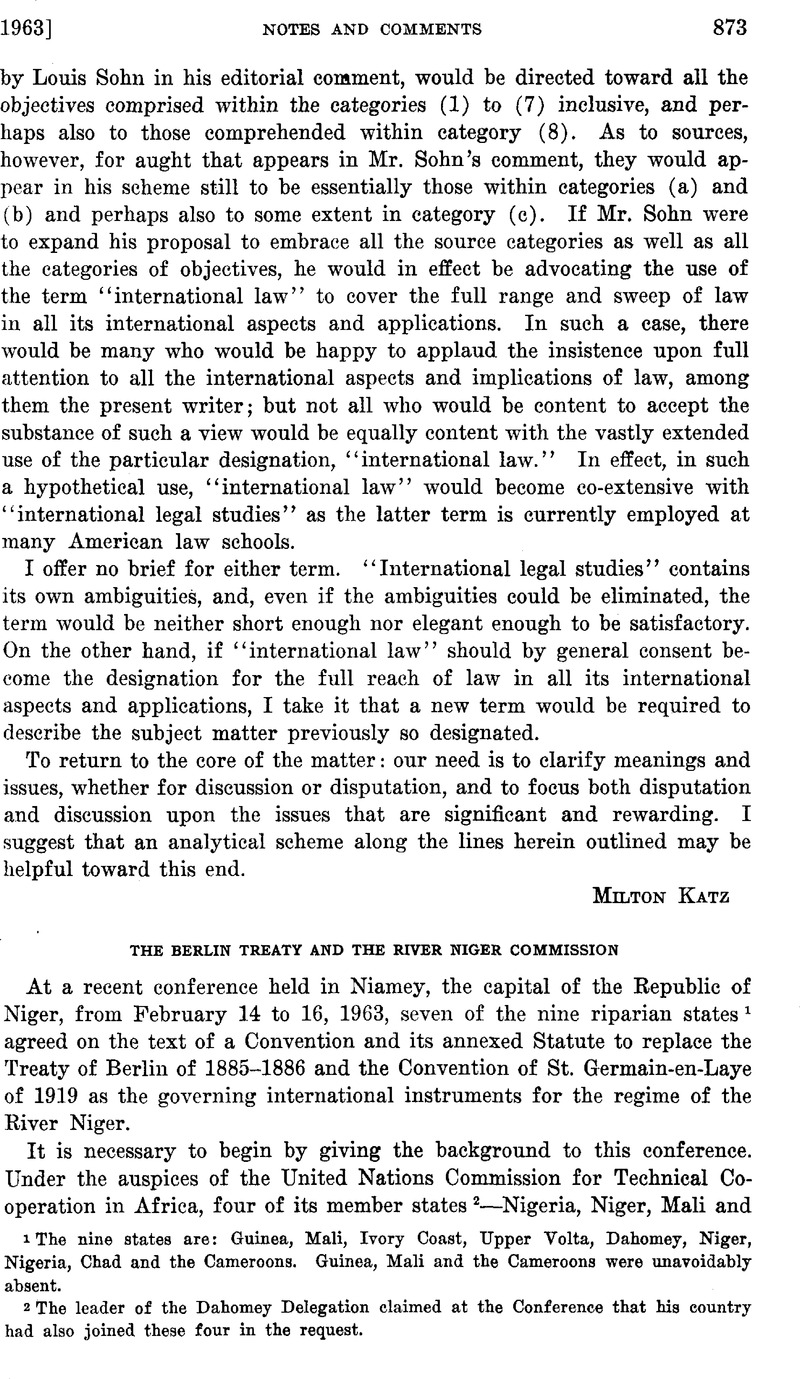Published online by Cambridge University Press: 28 March 2017

1 The nine states are: Guinea, Mali, Ivory Coast, Upper Volta, Dahomey, Niger, Nigeria, Chad and the Cameroons. Guinea, Mali and the Cameroons were unavoidably absent.
2 The leader of the Dahomey Delegation claimed at the Conference that his country had also joined these four in the request.
3 See the Niger Dams Act, 1962.
4 The entire scheme is estimated to cost about £80 million.
5 At pp. 112, 113
6 These included the Chief Legal Adviser of the I.B.R.D., Dr. A. Broches; the Assistant Director of the Legal Division of the United Nations Organization, Dr. M. Schreiber; and the Director of the United Nations ECOSOC Department, Eev. Father Pere de Breuvery; Hydrologist-E.C.A., M. Dekker; G.C.T.A. representative, M. Lefevre. The Eepublic of Sudan was given special permission to be represented by Mr. Sayed Hassan Mohamed El Amin as an observer.
7 Among the functions conferred upon the Commission in Arts. 13 and 14 of that draft were the drawing up and enforcing of “General Eegulations” and Resolutions, and the carrying out of “all the necessary works for the control of the river, the planning of which it has approved.”
8 P.C.I.J., Series A, No. 23, 1929.
9 F. J. Berber, Eivers in International Law 148-159, 270 (1959).
10 An entirely new Commission consisting of both riparian and non-riparian states was instituted under Art. 355 of the Treaty of Versailles, 1919.
11 This composition of the proposed Eiver Niger Commission shows that the intention is to confine it to the riparian or basin states, at least at its inception.
12 Art. 7.
13 Other international agreements and conferences recited in the preamble to the convention are: Barcelona Convention of April 20, 1921; Geneva Convention of Dec. 9, 1923; United Nations Charter of June 26, 1945; Inter-African Hydrological Conference of Jan. 16-25, 1961, and of May 17-20, 1961; United Nations Economic and Social Council Resolutions from 1952 to 1958.
14 See Cmd. 477, Treaty Series, 1919, No. 18, pp. 97-112.
15 Arts. 12 and 14.
16 Arts. 12 and 15. The idea of weighted voting was discussed, but was rejected in the end.
17 Cf. the typical functions of a river commission described by J. L. Brierly, Law of Nations 158 (1942), and by H. A. Smith, Economic Uses of International Eivers 143 ff. (1931).
18 For which see pp. 875-876 above.
19 The term “ exploitation” is defined in Art. 3 of the Statute as follows: “ The exploitation of the said River shall be taken in a wide sense, and refers in particular to agricultural and industrial uses, and to the collection of the products of its fauna and flora.”